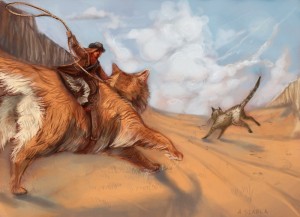I chose to answer to question number 7 for this weeks post,
At the beginning of this lesson I pointed to the idea that technological advances in communication tools have been part of the impetus to rethink the divisive and hierarchical categorizing of literature and orality, and suggested that this is happening for a number of reasons. I’d like you to consider two aspects of digital literature: 1) social media tools that enable widespread publication, without publishers, and 2) Hypertext, which is the name for the text that lies beyond the text you are reading, until you click. How do you think these capabilities might be impacting literature and story?
I think in order to answer this question we have to look at two of the main themes from this weeks readings, one being of course hypertext, social media tools and the new world of online stories, and the other being intersections. The new world of online text without limit that can spread like wild fire across the entire globe in a matter of minutes changes the role of writer, reader, and listener. When I log into my Facebook and see posts for the 10 most outrageous whatevers of this week, a trending article, or a developing news story and I chose to click in that moment I take control of my reader role and turn into an active reader, listening, and potential publisher. This is an environment new to us and it is really exciting. At first I am a reader but by choosing the setting, method, and distractions around I also become a listener, even more so if what I clicked on has a audio component, a video, radio or music. However the intersection of reader and listener is not alone, because of the non-publisher requirements of online stories I also become a sort of writer if I choose to pass the story along and contribute to the widespread publication of any given story.
The next component of my answer has to do with hypertext which makes the intersection in which all three roles interact even larger, allowing for even more of a a grey zone between the three listed roles. I know by know I sound like a broken record but writing down these themes and explanation of the connections I have made in my head helps me and hopefully you guys to understand where my mind has wandered to. Hypertexts require participation on the part of the reader or listener, you actually have to follow what is being said and are given an opportunity to read in greater detail what the original author intended the context of their story to be.
I think hypertext is a really cool idea and that it will help students and the western world to move away from our favourite literary past time of cat herding. I love that metaphor of a cat herding, I cant help but giggle every time I think of how that would look, this is probably how Chamberlain felt when explaining how we try to organize orality. This is probably my favourite discovery from this weeks reading, the idea that we should regard stories, reader, writer, and listener roles, and orality in not a hierarchical sense but a ever changing, flowing, equal plane on which to share, grow, and develop our stories together.
Just as a last note, hypertext and the new online world we’ve been discussion made me think of youtube and video interacts, I follow a few people on youtube and totally get a sense of participation in their videos even though its possible to be worlds apart. One of the girls I follow is really about self love and being happy and supportive of each other no matter what, give her videos a watch! here
found this… its wonderful!
talk soon,
E
Bibliography
The Chicago School of Media Theory, “orality”. accessed May 22nd 2015. https://lucian.uchicago.edu/blogs/mediatheory/keywords/orality/
Chamberlin, J. Edward If this is your land, where are your stories?: finding common ground. Toronto: A.A. Knopf Canada, 2003. Print.


Hi Erica,
I like the emphasis you put on the new roles and actions that readers can engage in when interacting with social media. Being able to spread a story by sharing it, or to add to it through comments or the creation of your own story. It blends the abilities of the reader and writer. Your description of hypertext also gave me a great insight. Whereas in a novel, or in some circumstances life, if the reader doesn’t understand what’s being said the story will still progress. In contrast hypertext provides the reader the ability to become knowledgeable about the material discussed, and then to have a better understanding when continuing with the material.
It’s interesting to think about how technology will further alter the once static roles of story-teller and listener. I find it neat that in ancient times there were designated story-tellers and actors, then philosophers, then scientists and teachers, then novelists. The roles are constantly changing, and every form of communication is in some way story-telling.
Landon
🙂
thanks for reading Landon!